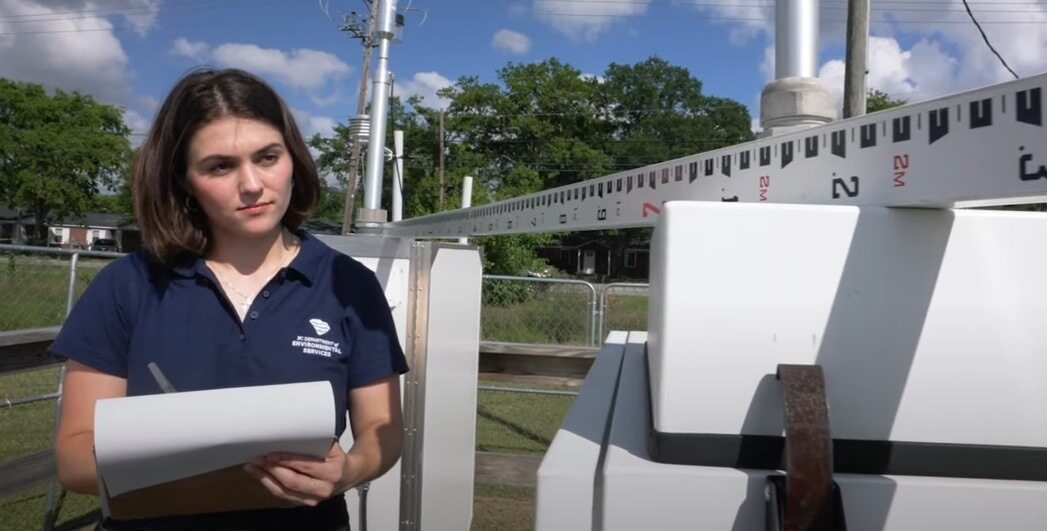S.C. Department of Environmental Services (SCDES) begins Daily Ground-Level Ozone Forecasts for Residents
FOR IMMEDIATE RELEASE:
April 1, 2025
COLUMBIA, S.C. — From April 1 through September 30, the South Carolina Department of Environmental Services (SCDES) provides a daily forecast for ground-level ozone concentrations across the state. These forecasts can help South Carolinians take precautions to prevent potential health impacts on days with expected increases in ozone concentrations.
Ozone is a colorless gas that is considered a secondary pollutant, meaning it’s formed through complex chemical reactions of molecules in the air. While ozone high up in the atmosphere protects people and the environment from harmful ultraviolet rays, exposure to high concentrations of ground-level ozone can be harmful to people who are sensitive to ozone pollution — especially children, elderly people and those with breathing problems like asthma.

Sophie Grimsley, Air Quality Data Analyst with SCDES’s Bureau of Air Quality, records data from one of SCDES’s air quality monitoring stations located throughout the state.
“High ozone concentrations generally occur on hot, sunny days in the spring and summer when the air is stagnant and the sun’s rays shine more directly on the earth’s surface,” said Rhonda Thompson, chief of SCDES’s Bureau of Air Quality. “We issue our daily ozone forecasts to help South Carolinians make healthy decisions about outdoor activities during the summer when we feel the most impacts from ozone.”
SCDES reports its air quality data to the U.S. Environmental Protection Agency (EPA), and that information is provided at the ZIP-code level for all of South Carolina through the EPA’s AirNow.gov website. The data are updated nearly every hour.
To receive daily ozone and air quality forecasts in South Carolina:
- Sign up for text or email alerts using the EPA’s EnviroFlash service at enviroflash.info
- Download the EPA’s AirNow free mobile app.
- Follow SCDES on social media: @SouthCarolinaDES on Facebook and Instagram, and @SC_EnvServices on X
On days with elevated ozone forecasts, it’s recommended that individuals reduce their ozone exposure the following ways:
- Schools could modify plans for outdoor activities such as recess, lunch and physical education classes.
- Outdoor activities could be planned for the time of day when ozone levels are lower, usually in the morning or evening
- Anyone involved in outdoor exercise or activities requiring heavy exertion could cut back on the level and duration of the activity.
“During our ozone forecasting season, we also like to remind South Carolinians of the ways they can help reduce ozone pollution,” said Greg Quina, Air Quality Modeling Section Manager with SCDES's Bureau of Air Quality. “Mobile sources of air pollution such as cars, trucks and lawn equipment contribute to more than half of South Carolina’s ozone levels, so being mindful of engine use during hot summer days can be a help.”
People can reduce ozone pollution by:
- Driving less by carpooling, walking or riding a bike, or using public transportation
- Reducing idling by turning off vehicle engines if you’re expected to be stopped for more than 30 seconds (except in traffic)
- Keeping to the speed limit, which saves on gas and reduces emissions
- Keeping vehicles mechanically tuned up and tires properly inflated, as both help save gasoline and improve air quality
To learn more about ground-level ozone pollution and for links to accessing South Carolina air quality data, visit des.sc.gov/ozone. Sign up for air quality alerts at enviroflash.info.
###

